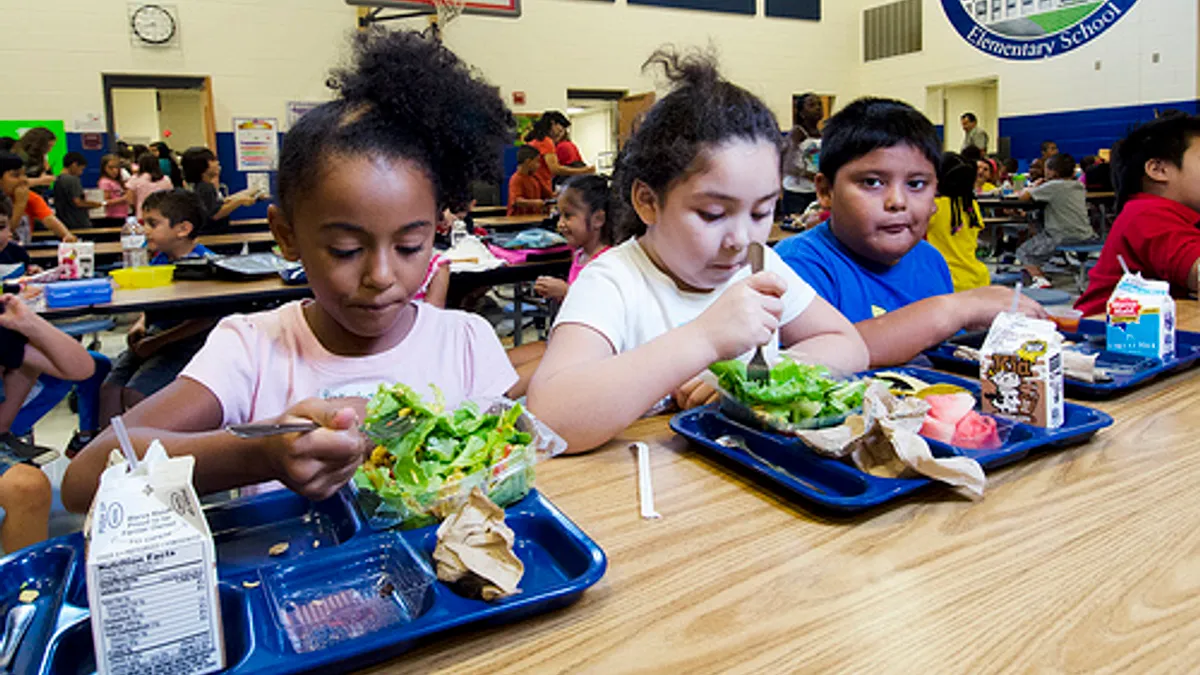Dive Brief:
- Pennsylvania's Wyoming Valley West School District sent letters to parents of students with lunch debt, suggesting that if they didn’t settle their accounts, parents’ "failure to provide [children] with proper nutrition" could be grounds for child neglect and placement in foster care if taken to court, NPR reports.
- Sent to parents after district officials noticed families owed a total of about $22,000 in breakfast and lunch debt, the warning was criticized as another example of "lunch shaming." The local Children and Youth Services agency denounced the threat as “unacceptable” and said it will not remove children from families over unpaid lunches.
- While the district will be eligible under federal guidelines to provide children with free school meals beginning this fall, parents with lunch debt will still owe the district money.
Dive Insight:
School meal debt is a growing problem, with 76% of districts reporting they have outstanding debt, according to the School Nutrition Association’s 2016 operation’s report. More recent numbers show school lunch debt climbed from a median of $2,000 to $2,500 per school district between 2016 and 2018.
As districts search for solutions to this national problem, they also face the possibility of lunch shaming children.
Recently, Warwick School District in Rhode Island came under fire for attempting to solve its school lunch problem by providing students who owed money with cold sandwiches in place of hot meals until they paid off their debt.
To curb the practice of schools singling out children with outstanding lunch dues, some states like New York and Tennessee have passed “anti-shaming bills” that ensure students are provided with meals even if they can’t pay for them.
However, for some districts, anti-shaming bills are followed by a spike in debt. One Oregon district’s unpaid meal debt increased from just $1,200 in the 2016-17 school year to $104,000 this year after it implemented its no-shaming policy.
According to an article published by The New Food Economy in January, unpaid lunch debt has skyrocketed in recent years, although exact numbers are still unknown. A 2018 Washington Post article reported that the figure is near $500,000 in lunch debt for the D.C. area alone.
To cover costs, districts should encourage full participation in schools’ free and reduced lunch programs. In 2018, the National School Lunch Program (NSLP) provided daily low-cost or free lunches to nearly 30 million PK-12 students across 100,000 public and nonprofit private schools.
A growing number of students are attending schools that are a part of the Community Eligibility Provision (CEP), a federal program that reimburses highest-poverty schools for providing meals at no cost to its students. According to FRAC, an increasing number of schools are taking advantage of the program. Since its inception, it has reached about 55% of all eligible schools, with more schools taking advantage of eligibility each school year. Still, a significant percentage of eligible schools — nearly half — haven’t taken advantage of the program.
While participating schools may face initial challenges in adopting the program, the schools currently participating say that the provision is working and barriers can be overcome with strong state, district and school leadership.
Because school eligibility for CEP depends on the percentage of families in the school enrolled in other federal assistance programs like SNAP, the program may not work in schools that have high numbers of low-income families who choose to opt out of enrollment.
Based on a 2017 USDA report outlining guidance for schools with lunch debt, schools should increase efforts to enroll students who qualify for reduced-price or free school lunches, as many who accrue lunch debt may actually be exempt from paying the full cost.







 Dive Awards
Dive Awards








